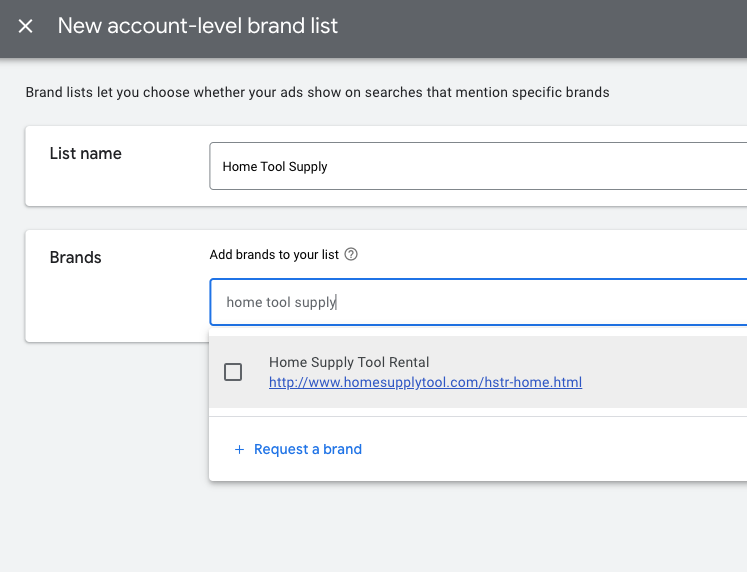Look, there’s a lot to keep track of in PPC these days, so I thought I would compile some of the bigger picture recent changes Google has made in PMax campaigns. Note, this is not an exhaustive list of changes! It’s just ones our team has our eyes on, and I wanted to share with you all. Onward and upward!
Improved Search Term Insights
If you really want the lowdown on this change, go check out Mike Ryan’s impressively detailed LinkedIn post here: Mike Ryan’s impressively detailed LinkedIn post on Search Terms Insights in PMax

My thoughts:
You can now select date ranges, comparisons, historical data, and download as a csv for further analysis. This report continues to grow in relevance. Any additional information we can get on what searches are driving traffic and sales for our accounts is helpful information we can utilize for targeting in other channels, exclusions, or even ideas for things like SEO titles and product feed attributes! A big negative however, is the insights do not include cost data. This is pretty damaging when trying to do any sort of efficiency analysis. The best you can do is to average your other account Shopping CPCs (another good reason to have a Standard campaign running as cleanup, even if you’re running PMax) and determine a rough estimate based on the number of clicks per search term.
As Mike notes, this is good because it’s beyond what we had before or had in Smart Shopping, however it still lags in data offered compared to Search or Shopping. Overall, I have to admit, I’m encouraged by this change because additional search term insights is an important tool in the smart PPCers toolbox and PMax just got us more data!
Improved Audience Signal Insights
Audience signals have been around for awhile, as well as insights on those audiences. But Google has recently added additional insights around those audiences such as share of conversions and conversion-based Index.

So for instance, you can learn that people in your sporting goods audience are 2.3x more likely to convert in your PMax campaign than the rest of your traffic. This can be a signal that it’s a valuable audience for you to pursue in other campaigns as well.
Reminder: Auction Insights
This isn’t new, but I think it worth reminding you of checking your auction insights within PMax. They are helpfully separated between Search and Shopping (importantly: they do not include other channels in the PMax mix!). The reason auction insights is helpful, is it can give you an idea of who your main competitors are, as well as help you keep an eye on any major moves by your competition.
While you can’t necessarily track CPCs or competitor cost through this tool, you can at least get an idea of what share of auctions you win (or appear in) versus your key competitors. Needless to say, it stands to reason that competition beating you directly in a majority of auctions are spending more money than you are… though it gets tricky to analyze this based on your CPCs since ad rank will change individual bids around.

By the way, while we’re talking about auction insights… NO you aren’t alone in having Temu suddenly showing up everywhere. It’s annoying, and there’s no way their business model is sustainable so we can only hope they crash and burn sooner than later so they stop driving up our CPC prices (too cynical?).
Brand Settings/Lists
Brand settings is an interesting new development within Google, as the primary way to manage brand versus non-brand searches has always revolved around exclusions. As Google continues to move as far away as they possibly can from exclusions (exclusions mean you don’t enter as many ad auctions, so less revenue for them dontcha know ;) ), they have graciously identified the need to segment brand vs non-brand for many accounts who want this functionality. For many brands, the intention of a user typing in their brand is way further down the bottom of the funnel, but it’s also an efficiency issue. A brand has literally already invested money marketing to users to become aware enough of their brand to type it into Google… so typically a higher ROAS is necessary for brand simply because it has already cost a brand money in marketing… somewhere down the line.
Google’s current (newish) solution to this, is something called Brand Settings or Exclusions. In PMax, you can now find an option for “Brand List Exclusions” in the settings tab of your selected campaign:

When this is selected, you can Add a brand previously selected, OR create a new brand list to exclude based on a brand:
A couple of things to be aware of here, you do not specifically control what “brand terms” are utilized in this list. The fact that Google can still miss intent for things like “milk chocolate” vs “chocolate milk” causes me to wonder if they’re getting every possible brand term… ESPECIALLY for brands that are generically similar to their main categories. If you sell for “Home Tool Supply” store dot com then my guess is your brand list is going to be difficult to navigate… admittedly that’s the case with or without ML so you may want to NOT opt to use brand exclusions in that case.
Funny story, but I made up that brand for this post, and then discovered there is a store by that name. Of course there is.

I also think you should pause and ponder whether you really should exclude brand from PMax. There has been much debate on this amongst us PPC geeks, and there are strong opinions all around, but I am a fan of testing. The reason I pause to always exclude brand from PMax by default, is that the way PMax works is because of Machine Learning (ML) making the best decision on a user’s entire path. If the core ending of that path, brand conversions, is excluded from the campaign… perhaps that is limiting its ability to perform as well as it can? Should you instead leave brand in your PMax campaign and simply raise your blended ROAS target in that campaign? It’s worth testing as we’ve seen both work well in various accounts we manage at my agency, and I don’t really think either is a practice that should be followed blindly without individual account testing.
Final note on this one, Google has now streamlined the current process for applying negative keywords or topics and placements exclusions through the Google team by submitting this form: Performance Max Campaign Modification Request Form
They've allowed negative keywords at the campaign level for PMax through your Google team, but topics and placements exclusions at the campaign level is a new option, and you can now do it through that form. So if you do want to make those modifications (some people like applying brand negative keywords at the campaign level through this process, for example) that you don't want at the account level, you can utilize that form I shared above.
Store Sales Reporting (offline-to-online)
If you don’t have a physical retail store, you can just ignore this one. If you DO, then this is pretty cool, as you can now connect your offline store sales reported into Google Ads to your PMax campaigns and adjust bidding accordingly.

Not much more to say other than… it’s more, and better data for the machine to make better decisions… so do it! (as long as you’re reporting conversions accurately)
Page Feeds
I wrote in depth on Page Feeds, so I’ll just share that post here and you can dig into it. The short is that you can now designate specific pages you want (or don’t want!) to show in the text ads (DSA) element of PMax.

More control allows better segmentation within asset groups. If you’re curious, check out my full post:
What Are Page Feeds in Performance Max Campaigns?

Video Asset Creator
You may be familiar with this one, but it’s new to the last 12 months so I’ll still include it. Google released a pretty incredible video creation process you can use for PMax videos that allows you to seamlessly create a video asset directly within Google Ads.
Is this going to beat out a skilled video creator? Probably not (though sometimes, it’s annoying how well our worst designed ads do, amirite???). But I see things like this as a great baseline opportunity. You need to get basic videos out for ads within PMax? You can do so quickly and easily within Google Ads:

One other note, one big thing that changed recently for Video Creator was that you no longer have to connect Google Ads to a YouTube Ads account! Good news for startups if you don’t have a following or channel yet, but still want to get some basic video ads out quickly.
Budget Pacing Insights
Finally, let’s check out budget pacing insights. To be honest, I haven’t really decided if I like this update, or if it’s just “meh.”

According to Google, you can use budget pacing insights to reallocate budget to other campaigns that need the cash, or if you need to plan additional budgets for your PMax campaigns based on how they have been performing. For the most part, we flex budgets based on historical performance already, but perhaps we’ll love this even more as we continue to use it. At least now you know about it too ;)
So that’s what I’ve been tracking for recent PMax changes. Per usual, it’s possible I’ve misunderstood something in here, or you may have a different take on it so please share!
Hope that’s helpful, and may the auctions be ever in your favor.


.webp)


.jpeg)




.png)

